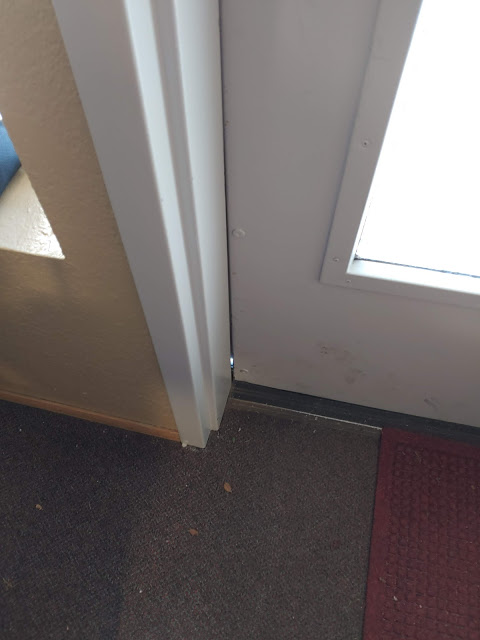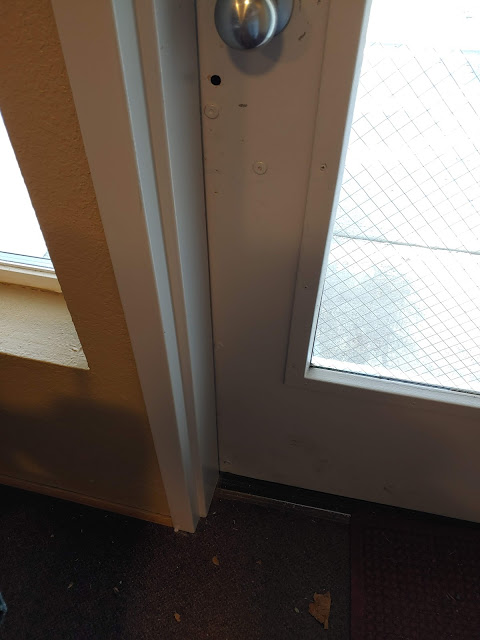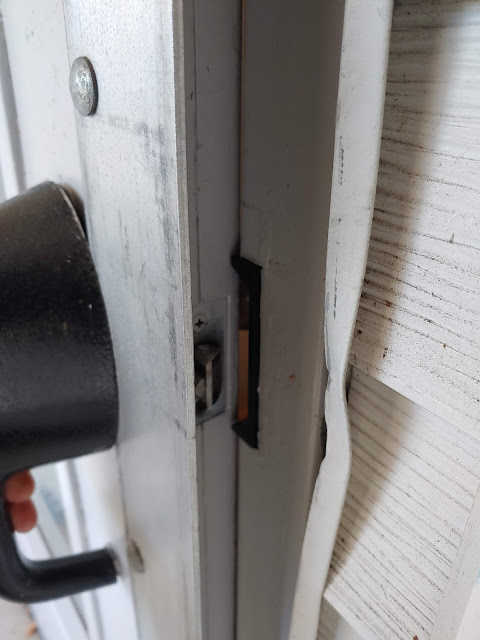One security issue that is very common in new construction is that of the gap between door and door frame that is too big. That gap is called the margin. When somebody is installing a door they want to make sure that the door doesn’t rub against the frame because if it does, people will complain. To make sure this doesn’t happen they leave a large margin as a safety factor.
Sometimes the margin is an acceptable 1/8″ or less. This is an actual legal requirement for fire doors according to NFPA80. More often it is 1/4″ or more. Sometimes it is such a wide gap that you can see daylight between the door and frame. In these cases somebody can usually unlock the door with a large screwdriver or maybe a credit card. In a fire the door wouldn’t stay shut long enough to save lives of people still behind the door.
How do we address this problem? The bandaid solution I see most often is to install an astragal or a latch protector to cover the gap. The problem with the bandaid solution is if somebody really pulls or kicks the door hard it will probably open. Locks work better when the door is closer to the door frame. If you think about it this makes a lot of sense. The bigger the gap, the more leverage there is on the bolt in an attempted break-in. That translates to the bolt or latch breaking more easily.
The best way to address this problem is to fix the way the door hangs in the frame so that the margin is smaller between the door and frame. That can be done by either re-hanging the door in which case you’d have to call somebody else, or shimming the door, or replacing the hinges with a continuous hinge.
Continuous hinges are great but it’s a $500 job minimum. Shimming a door doesn’t cost nearly as much, less than $150 for regular metal shims. For some applications polycarbonate is more appropriate at a similar cost.
When the door gap problem is addressed in whatever way the gap should be 1/8″ or less. The force necessary to pry or kick the door open should be much higher. Bear in mind that flexible aluminum and steel doors are flexible and even if the gap is only 1/8″ with hollow metal doors it is still possible to pry the door and frame away from each other.



